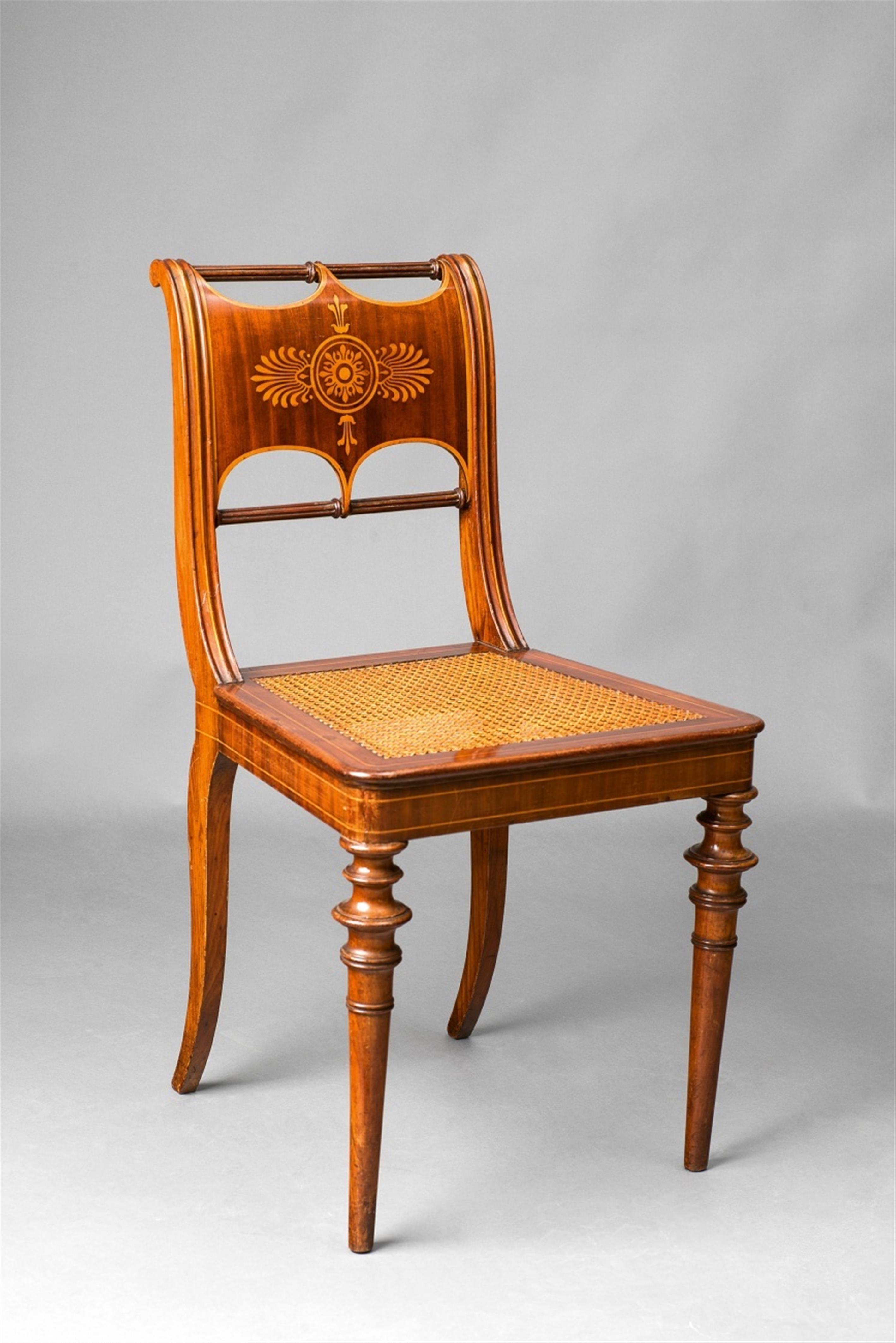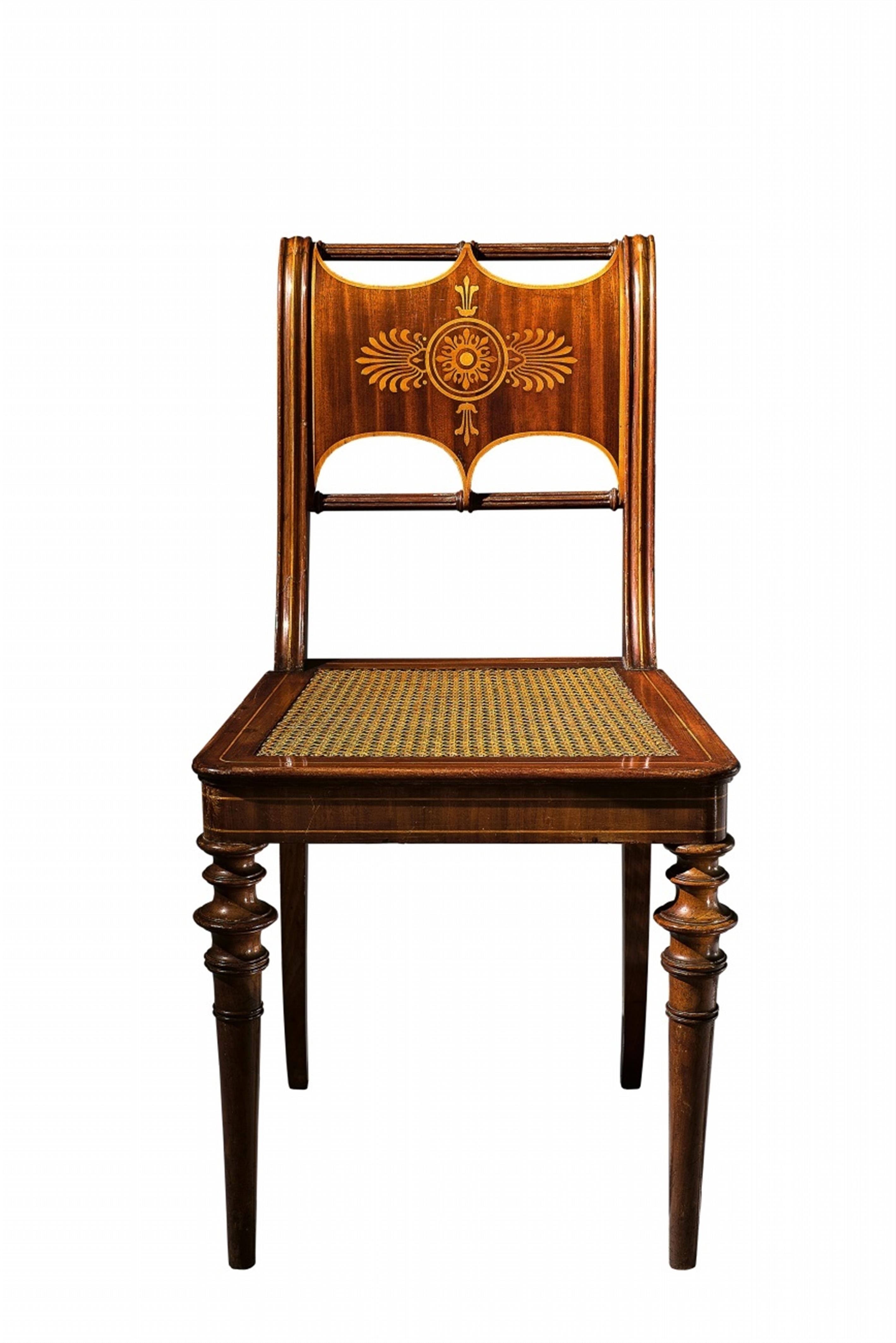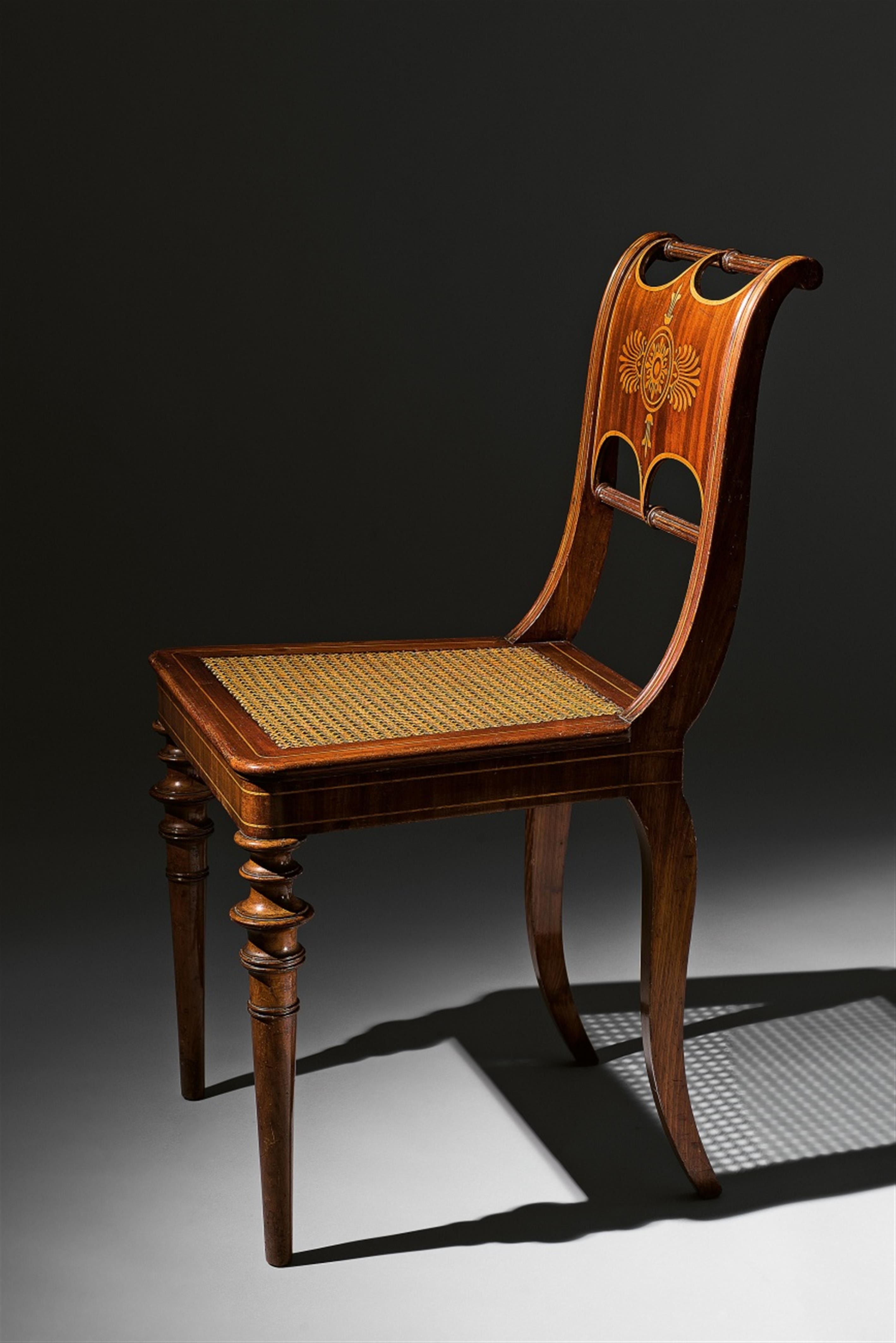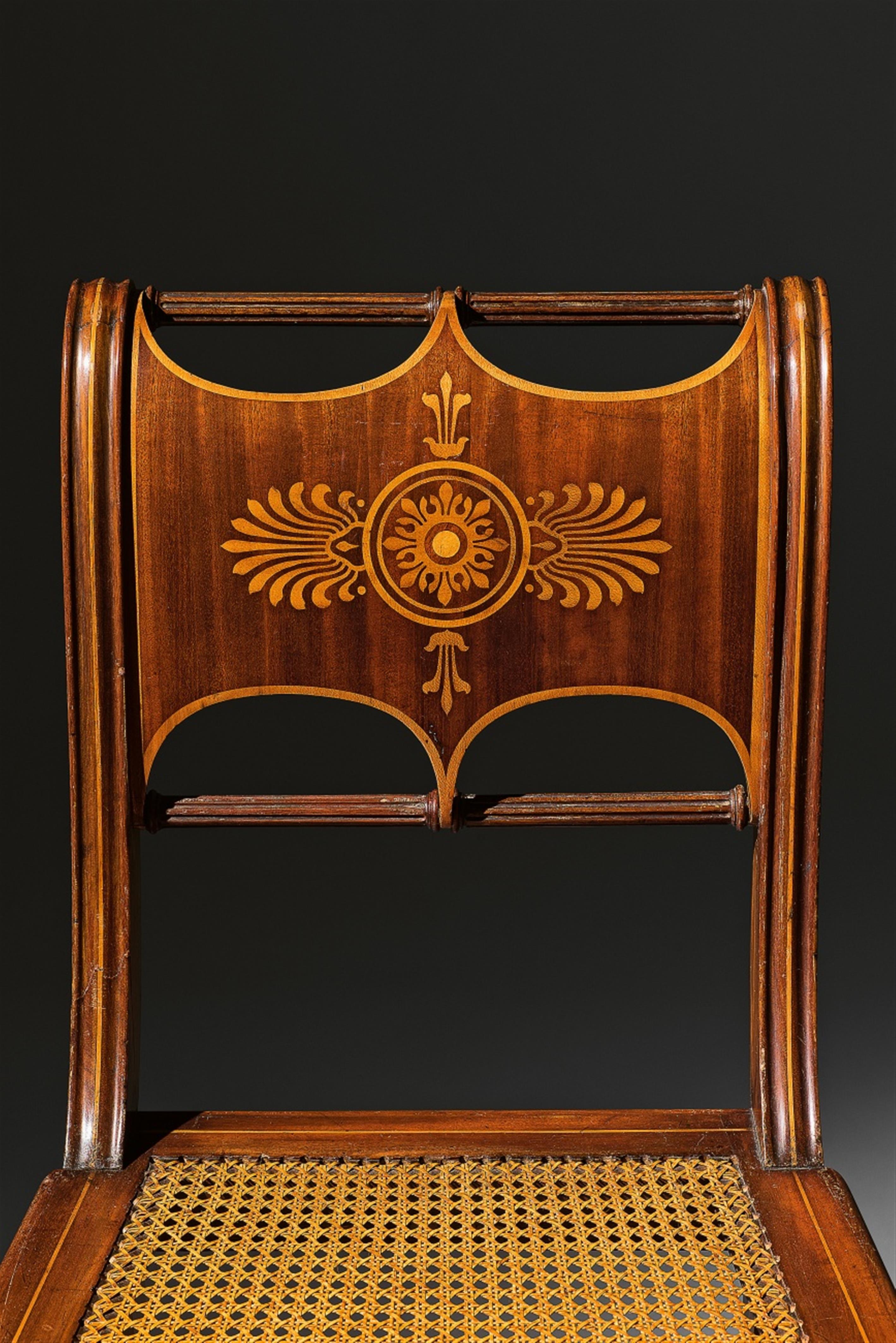A rare and important salon chair
Mahagony and mahogany veneer, maple, oak, cane upholstery. Slanted-backed chair with cane upholsted seat on two turned front legs and curved square-section back legs. The backrest designed as a shaped mahogany-veneered plywood panel between two moulded horizontal stretchers. Stamped XIII, remnants of a label inscribed no. 19 to the back apron. 86 x 45.5 x 45 cm.
Carl Wanschaff or Christian Sewening, designed by Karl Friedrich Schinkel, 1828/30.
This chair is thought to originate from a 24 piece suite made for the Palais Cumberland on Wilhelmstrasse. From 1825 - 1835, the palace was home to King Ernst August I of Hanover (1837), Duke of Brunswick, 1st Duke of Cumberland. The piece was attributed to this suite on the basis of a drawing by Georg Friedrich Laves depicting this chair together with another, which is dated 1832 and now kept in the Staatsarchiv Hannover (LN2052).
More important for the attribution was a drawing by Friedrich Schinkel's pupil Ludwig Lohde after a lost original by his master that is housed in the Kupferstichkabinett in Berlin (SM 49.35). The design sketch depicts the chair from the front and from the sides, exactly as it stands before us today. This present work is presumably the only extant example made to the specifications in the drawing.
Achim Stiegel wrote in his catalogue text of 2013: “Under consideration of (…) all the material on Schinkel's oeuvre which we have gathered, this chair can be considered the most accomplished chair design ever carried out by the architect. Apart from a handful of opulent gilded chairs and several polychromed fauteuils, this is the most sumptuous chair design of which we know. When carrying out such opulent furniture designs, Schinkel only worked with the same two studios in Berlin. Thus, we can assume either Carl Wanschaff, Christian Sewening, or Josef Schneevogl as the maker of these unusual pieces. According to Johannes Sievers, a descendant of Carl Wanschaff, he was the primary specialist who Schinkel entrusted with designs for light-coloured inlays. However, records show that Christian Sewening received just as many commissions, and recent research has illustrated the high quality of their curved and rounded veneered furniture.” (from the German, p. 10).
Johann Carl Georg Wanschaff (Braunschweig 1775 - 1848 Berlin) was probably closely involved in Schinkel's business as of 1806, and was his ebenist of choice. Wanschaff's first significant commission was the furnishing of Prince August's room in 1816. He is listed as court cabinetmaker in 1829, employed at the recommendation of Prince Charles, whose palace he furnished.
This design, especially that of the front legs, is influenced by ancient Roman klinai, a kind of couch in which one reclined in a semi-lying position. The curved back legs can also be found in ancient Greek klismos chairs. The various elements are combined with a confident eclecticism typical of late Neoclassicism in Prussia. Karl Friedrich Schinkel developed this design in 1825 for the furnishings of the Sternsaal in Berlin Palace. In this case, the ebenist was Wanschaff. A slightly lower and more comfortable version was later designed for Charlottenhof in 1827.
<a href="https://www.lempertz.com/fileadmin/user_upload/Images/3D/239_377025/index.html">Objekt in 360° view</a>
Click on the link to view the object from all angles.
Provenance
One of five chairs known to have belonged to the former private collection of Heinrich Thiele.
Literature
Published in cat.: Karl Friedrich Schinkel, Zwei Salonstühle Berlin 1828/30, Berlin 2013.
Cf. cat. K.F. Schinkel Möbel und Interieur, Munich-Berlin, undated, no. 13 and 26.








